QMetry Custom Dashboard access depends upon the package you have purchased as mentioned in the table below.
| Package | View Custom Dashboard | Add System Gadgets to Custom Dashboard | Add Gadgets created using QMetry Insights (Custom Gadgets) |
|---|---|---|---|
| Base | Y | Y | N |
| Advanced Report | Y | Y | Y |
Overview
Custom Dashboard lists all the dashboards that you have created or that are shared with you. Custom Dashboard is divided into two sections:
Custom Dashboard provides an easy-to-use interface that allows you to organize custom gadgets in sequence. Dashboard generates "best-fit" charts for the report data automatically. User can add System/ Custom gadgets or Shared gadgets in the Dashboard.
A Custom Dashboard can be either Public or Private. By default it remains private when created.
Note: QMetry Custom Dashboard module will only be visible if the user has the View rights for Report. Similarly, users can make any changes within the module only if they have the Modify rights for Report.
You can perform the following operations on Custom Dashboard.
You can add new custom dashboards and also modify them as per requirement. A Custom Dashboard can be created using system gadgets, custom gadgets or shared gadgets.
1. Click on QMetry Custom Dashboard on the navigation bar at left. The QMetry Custom Dashboards screen opens.
2. On the My Dashboard tab, click on the New button to add a new dashboard.
3. Give Dashboard Name and click Create Dashboard.
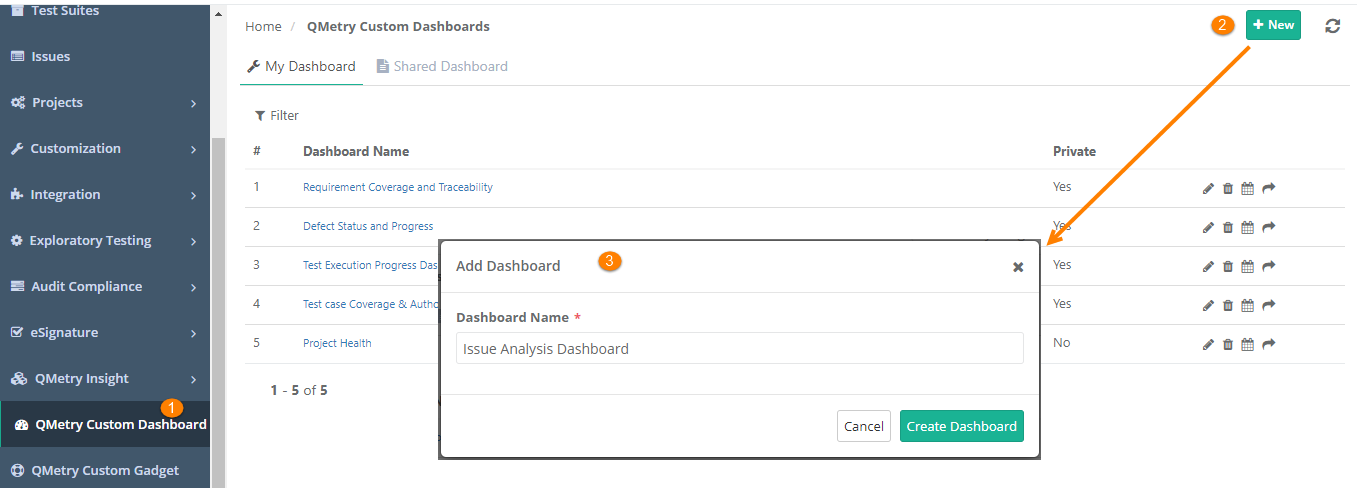
The list of available Gadgets are displayed. A Custom Dashboard can be created using system gadgets, custom gadgets or shared gadgets.
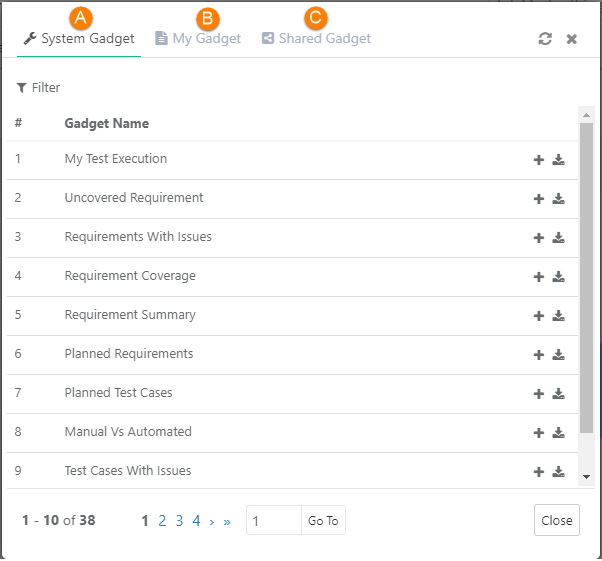
(A) Add System Gadgets: QMetry System Reports are available to add as System Gadgets. These predefined gadgets can neither be edited or deleted. System Gadgets can be drilled down to view the details in tabular form and download it.
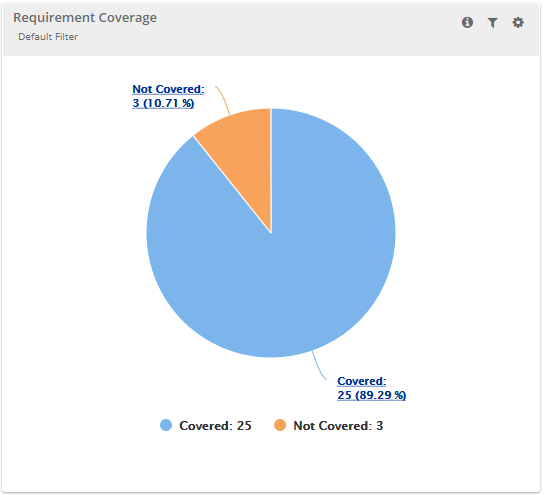
(B) Add Custom Gadgets: Custom Gadgets are the list of gadgets created by the logged-in user. The owner of the custom gadget can edit the custom query/logic directly from the dashboard. These custom gadgets can be edited as well as deleted.
For an added custom gadget, you an -
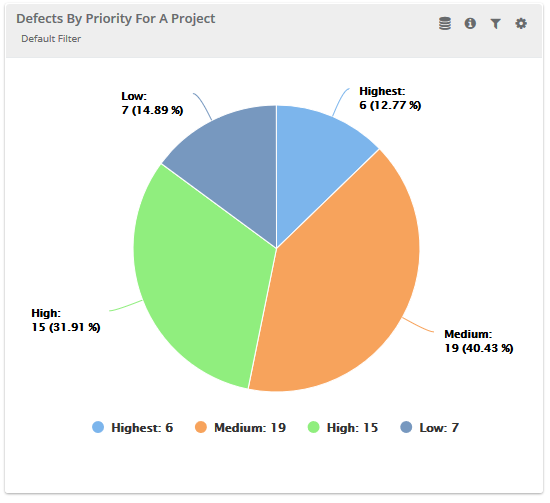
(C) Add Shared Gadgets: Shared gadgets are those gadgets which are shared by other users. The user to whom it has been shared can just view the gadget and export it. They can not edit the gadget shared by other users.
Shared are those gadgets whose owner is not the logged-in user but which are shared by other users.
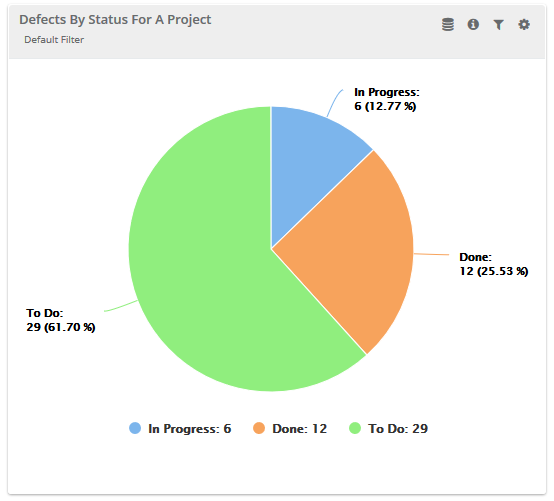
Click Close once you are done adding the gadgets.
To add more gadgets to an existing dashboard, open the dashboard and click on the Add Gadgets button. Click on the + icon to add that gadget to the dashboard. You can add multiple gadgets at a time. You can also add a single gadget multiple times.
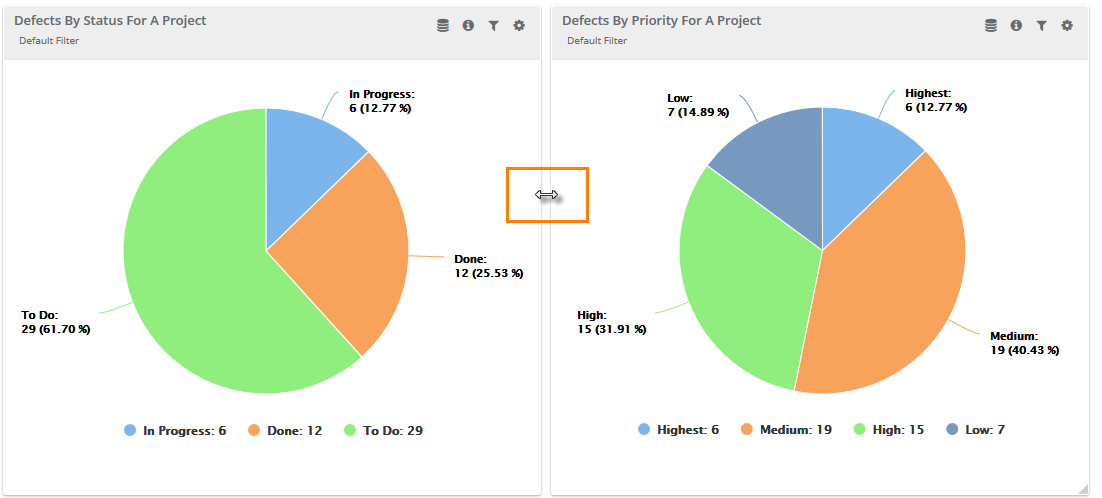
You can remove a gadget from the dashboard. If the dashboard is shared with other users, then the removed gadget will also not displayed in that shared dashboard.
To remove a gadget from dashboard, click on the Cog icon for the gadget and select Remove.
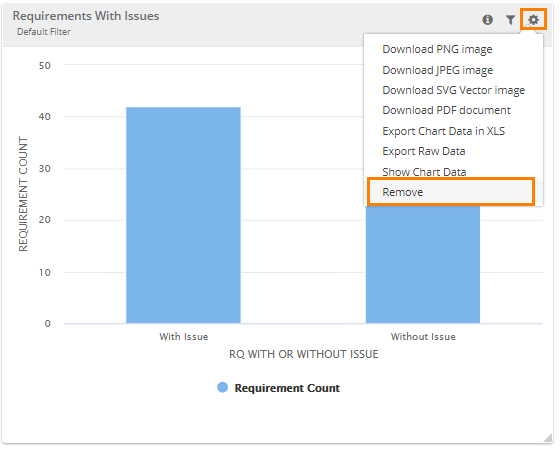
You can download gadget with multiple options - if it is a graph, then you can download it in PNG, JPEG, SVG, PDF formats and if it contains tabular data, then you can export the data in XLS.
To download a gadget from dashboard, click on the Cog icon for the gadget and select required download option.
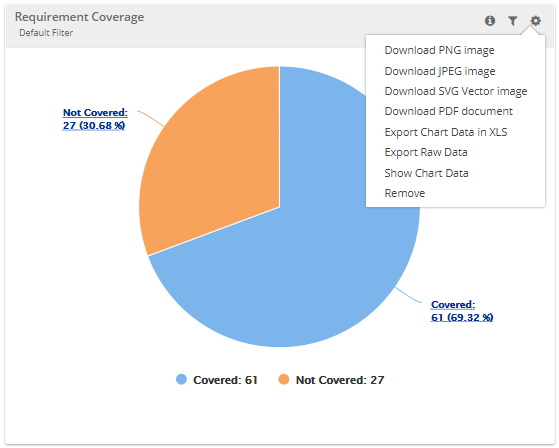
The values/criteria provided during query execution will be saved and will be applied as default to the gadget added on dashboard. If you change the filter and that dashboard is shared with other user then the filter will also change for that user.
1. To modify the default filter, click on the Filter  icon for the gadget.
icon for the gadget.
2. Select/deselect filter values and click Apply.
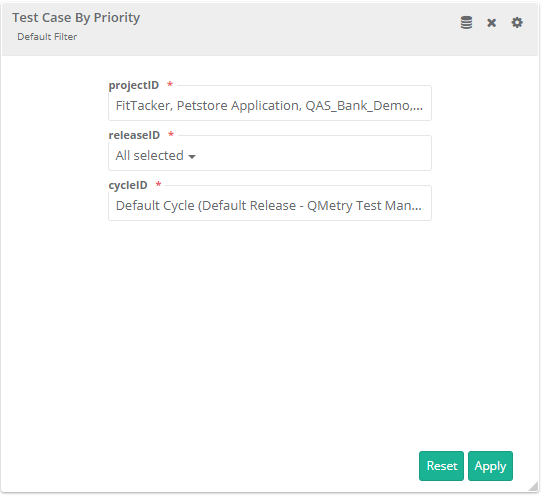
3. You can also tag the applied filter to identify it.
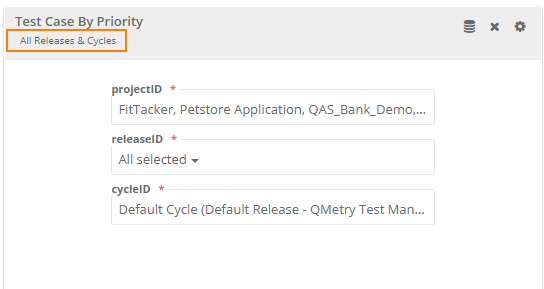
Click on the cog icon of a gadget and click Edit. Refer to Edit Gadget for more details.
The custom dashboard can be scheduled one time/recurring as email notifications. To schedule outbound emails at particular frequency, click on the Schedule button for the report that you want to share. The report details will be sent in PDF to recipients as per defined schedule.
The scheduler icon is provided on the Dashboard list screen with individual dashbord and on the dashboard header when it is open. Clicking on this icon opens a screen with the two tabs:
The report details will be sent in PDF to recipients as per defined schedule. The email recipients could be outside QMetry instance.
Open the Schedule Dashboard tab. It opens a template to fill the details and schedule the emails to be sent as notifications along with the report in PDF.
Note: Only Graphical reports can be emailed using Schedule Report. For tabular reports users have to export them individually in CSV and share them with the recipients.
Once you are done entering the details, click Submit to schedule the report. The report will be sent as per the set date, time and frequency.
To send the email instantly, click Run Now.
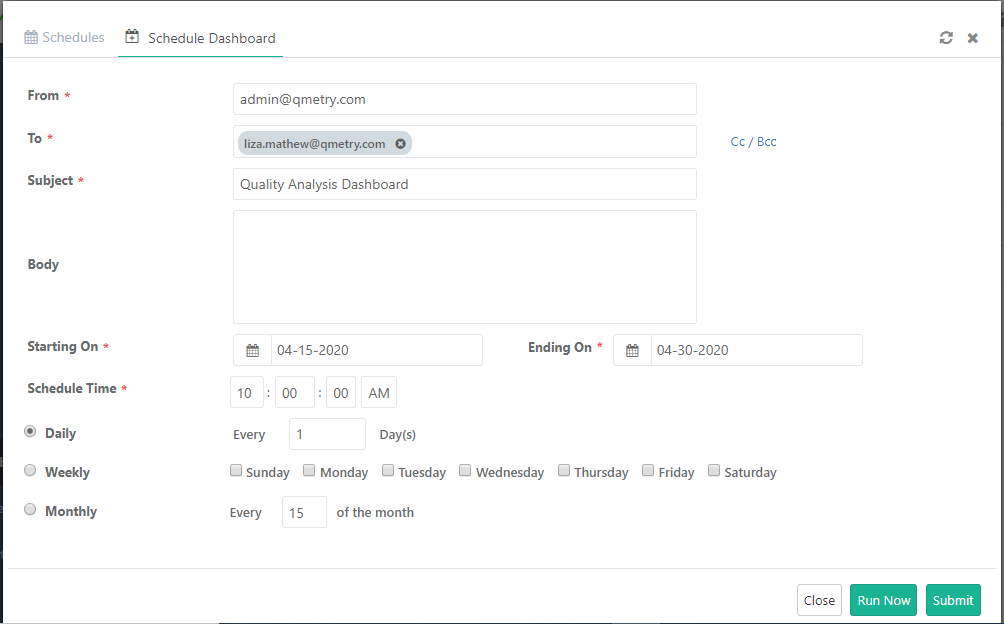
Once you schedule the dashboards they will be displayed on the Schedules tab. You can edit and delete the schedules by clicking on the respective icons.

To export the dashboard gadgets to PDF, open the Custom Dashboard and click on the PDF  icon on the header.
icon on the header.
Note:
User who has created a dashboard can share it with other users. Once a dashboard is shared, the user, with whom it has been shared, will be able to see that dashboard under the Shared Dashboard tab.
You can share dashboard from -
(A) My Dashboard tab

(B) Dashboard Page header

On clicking the Share Dashboard icon (either (A) or (B) above), the screen opens with two tabs on it: Users and Embedded URL.
User who has created the dashboard can share it with other users using the user names in QMetry.
1. Open the Share Dashboard icon (either (A) or (B) above), the screen opens with two tabs on it: Users and Embedded URL.
2. Click Add Users.
3. Select users on the drop-down list with whom the dashboard is to be shared.
4. Click Add.

User who has created dashboard can generate embedded URL and share the link. This link will allow access to this dashboard without any authentication in View mode. This link can be used to share the dashboard with other users or for integration with third party integrations.
Note: Embedded URL gives you access over live reports - graphical as well as tabular.
Generate Embedded URL:
1. Open the Share Dashboard icon (either (A) or (B) above), the screen opens with two tabs on it: Users and Embedded URL.
2. Open the Embedded URL tab.
3. Click Generate to generate the embedded URL.
The URL remains valid and active unless it is regenerated or deleted.


Use Embedded URL in Confluence
Refer to Use Embedded URL in Confluence for more details.
To refresh the gadgets on the custom dashboard manually, click on the Refresh icon on the dashboard header. It will sync the gadget data to render the reports with latest data.